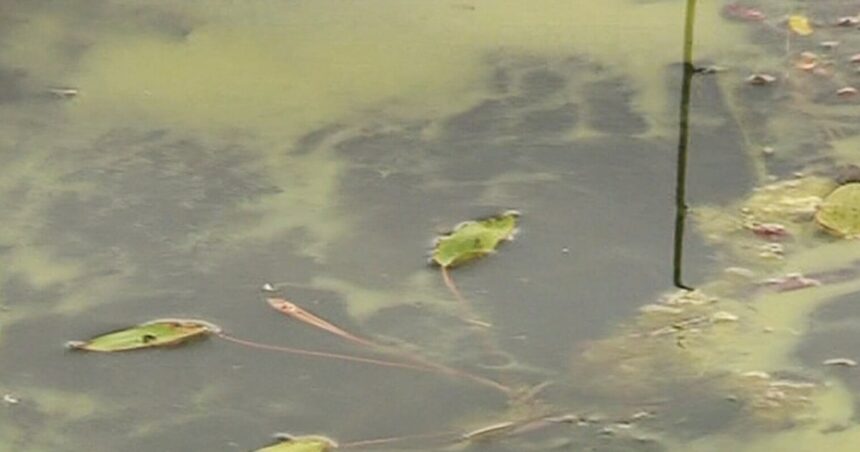As summer temperatures climb across the Maritime provinces, New Brunswick health officials have issued an urgent warning about the increasing risk of toxic blue-green algae in the province’s waterways, potentially threatening both public health and beloved summer activities.
The provincial government announced yesterday that warming water temperatures have created ideal conditions for cyanobacteria—commonly known as blue-green algae—to proliferate in lakes, rivers, and other bodies of water throughout New Brunswick. These harmful blooms can produce potent toxins capable of causing serious health problems in humans and proving fatal to pets.
“We’re seeing the perfect storm of conditions for blue-green algae growth,” said Dr. Jennifer Morris, provincial environmental health specialist. “The combination of rising temperatures, stagnant water bodies, and nutrient runoff has accelerated bloom formation earlier than we typically expect.”
Blue-green algae often appears as a thick, paint-like scum on water surfaces, though it can also be present without visible signs. The distinctive blue-green, bright blue, brown, or red coloration serves as a critical warning sign for residents. Health officials emphasize that water containing these blooms should be avoided entirely, even if it appears clear.
The Department of Health warns that exposure to cyanobacteria toxins can cause skin irritation, eye inflammation, allergic reactions, and gastrointestinal illness. More severe reactions may include liver damage and neurological effects. Children and pets face heightened risk due to their smaller body mass and likelihood of ingesting water while swimming.
“We’ve already received reports of pet illnesses suspected to be connected to algae exposure,” noted Dr. Morris. “Dogs are particularly vulnerable as they may drink contaminated water or lick their fur after swimming in affected areas.”
The provincial advisory recommends residents take several precautionary measures:
Avoid swimming in water where blue-green algae is visible or suspected
Do not use affected water for drinking, cooking, or bathing
Keep pets and livestock away from contaminated water sources
Rinse thoroughly with clean water if exposure occurs
Report suspected blooms to the Department of Environment
The warning comes as water quality monitoring has detected concerning bloom formations in multiple popular recreational areas, including parts of the Saint John River system and several inland lakes. Officials note that blooms can appear and dissipate rapidly, sometimes within hours, making vigilance essential for water users.
Environmental scientists point to climate change as a contributing factor in the increasing frequency and severity of toxic algae blooms across Canada. Warmer water temperatures, combined with agricultural runoff and inadequate wastewater treatment, create nutrient-rich environments where cyanobacteria thrive.
“What we’re seeing represents a significant environmental and public health challenge,” explained Dr. Thomas Reynolds, aquatic ecologist at the University of New Brunswick. “These blooms are becoming more common, more toxic, and appearing earlier in the season than historical patterns would suggest.”
Provincial authorities have increased water testing efforts and are working with municipal partners to improve public notification systems. Officials stress that prevention remains the most effective strategy, urging waterfront property owners to minimize fertilizer use and ensure proper septic system maintenance to reduce nutrient loading.
As New Brunswickers navigate another summer potentially affected by these toxic blooms, the question emerges: will our cherished water recreation traditions need to adapt to this increasingly common environmental threat, or can coordinated action reverse the troubling trend of proliferating blue-green algae in our provincial waterways?


















